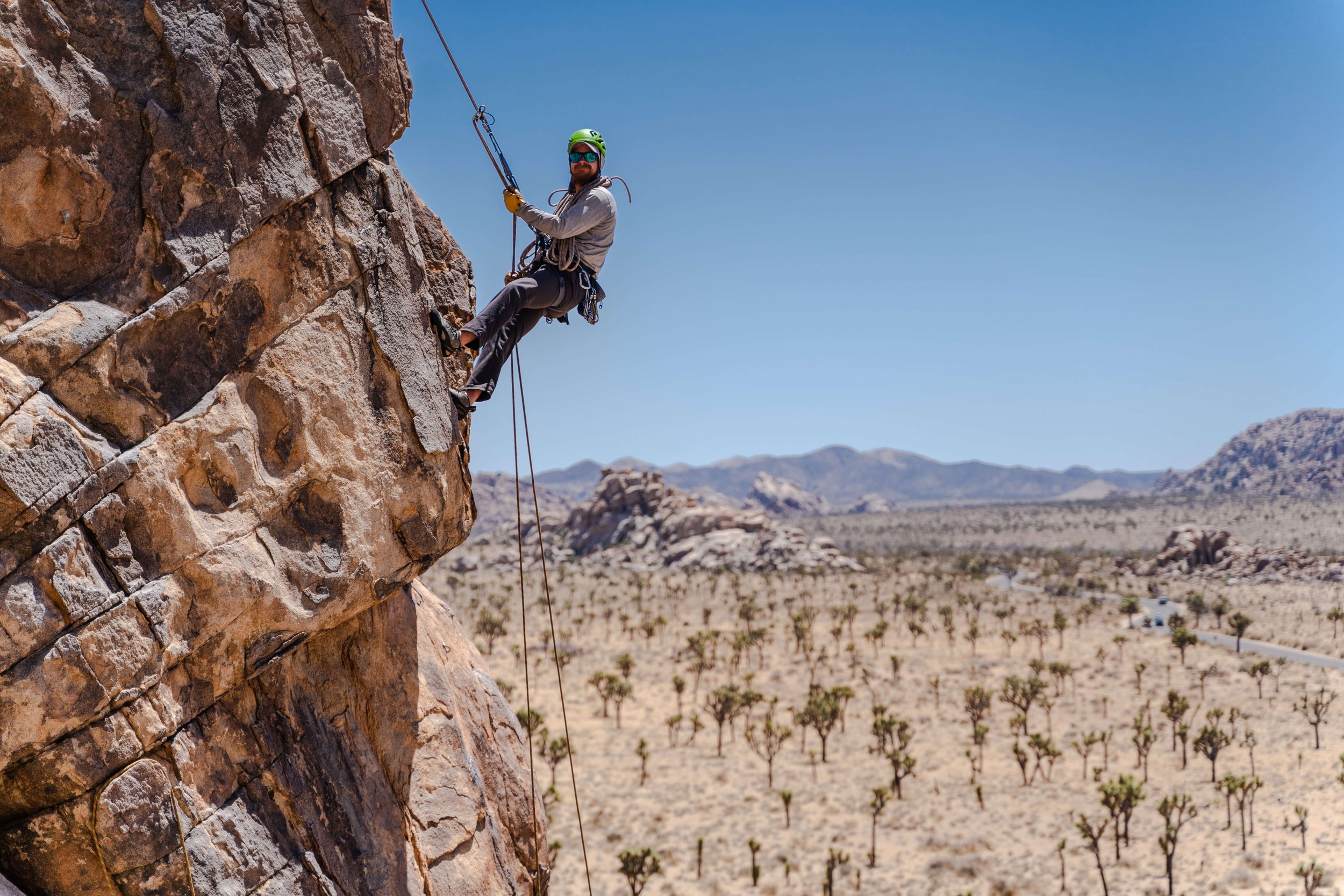
Rappelling
Summit Climbing Guides offers a comprehensive rappelling course for climbers, covering essential skills like self-tethering, setting up extended rappels with a backup system, using the fireman's belay technique, rope management, and rope throwing techniques. Enhance your safety and enjoyment of rappelling with our certified guides.
What You’ll Learn In Our Rappelling Course
No experience is needed for the rappelling course. Learn how to clean bolted anchors, do long rappels, and use gear safely. Our highly knowledgeable and experienced instructors teach proper gear use and techniques. Participants should have harness, shoes, helmet, ATC, carabiners, slings, cordellette, or a personal anchor system. If you do not have any of this gear, we can supply everything at no further cost. Learn more about our rappelling course below!
rappelling course overview
1. Talk about the equipment we use (climbing gear like carabiners, belay devices, ropes) and how to take care of it
2. Explain the commonly used method of rappelling and its drawbacks, demonstrate a extended rappel using additional equipment
3. Practice setting up and double-checking the extended rappel
4. Practice securing oneself to the anchor, setting up a extended rappel, and cleaning the anchor (Ground School)
5. Students practice securing themselves to the anchor, setting up a closed rappel, and cleaning the anchor under the guide's guidance. They may also practice a simulated rescue. (On Cliff)
6. Discuss using natural features for rappelling (trees, large stable rocks) and explain any access restrictions, such as those in Joshua Tree National Park.
7. Allow time for discussion, questions, and extra practice as needed.
What is rappelling?
Rappelling, also known as abseiling, is moving down a steep slope using a rope. This technique allows climbers and professionals to safely descend cliffs and slopes. Abseilers manage their own descent using techniques to increase friction on the rope, like wrapping it around their body or using tools like a rack or figure of 8. They choose techniques based on factors such as speed, safety, and weight. Modern rappelling includes advanced devices like the ATC or GriGri. The term "rappel" comes from the French word "Rapeler," meaning "to recall, to pull through."



